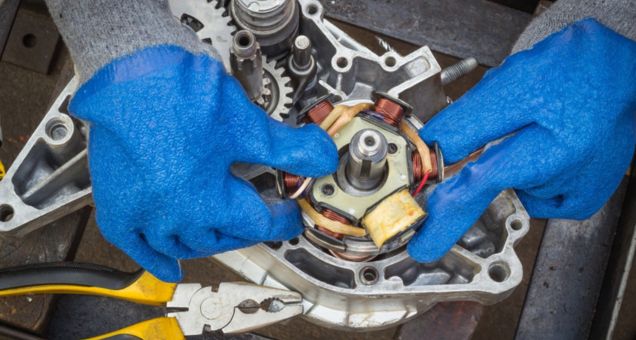
The Impact of Customer Analytics on the Retail Industry
The rise of customer analytics has transformed the world of retailing vehicles and their spare parts. Today, automotive companies have access to more data than ever about their customers. This article will explore how Greaves Retail, India’s leading multi-brand electric vehicle [electric 2-wheelers (e2W), electric 3-wheelers (e3W)] and spare parts retailing network is using customer analytics to improve its business success.
Understanding Customer Behaviour
The first step in using customer analytics is to collect data. Greaves Retail through various touch points collects data and stores them in data warehouses and “data lakes”. While a data warehouse stores structured data, a data lake is a centralised repository that allows one to store any data at any scale. Greaves Retail stores transactional data (such as details of vehicles or spare parts sold) and customer preference data (such as colours, battery, EV driving range etc.). By analysing customer data, businesses can identify patterns and trends that help them understand customers better. For example, customers in Eastern India prefer yellow-coloured EVs whereas customers in South India prefer more blue-coloured vehicles. Through analytics and visualisation tools such as Metabase; Greaves Retail is able to glean various insights that influence its sourcing strategy for vehicles and spare parts.
The first step in using customer analytics is to collect data. Greaves Retail through various touch points collects data and stores them in data warehouses and “data lakes”. While a data warehouse stores structured data, a data lake is a centralised repository that allows one to store any data at any scale. Greaves Retail stores transactional data (such as details of vehicles or spare parts sold) and customer preference data (such as colours, battery, EV driving range etc.). By analysing customer data, businesses can identify patterns and trends that help them understand customers better. For example, customers in Eastern India prefer yellow-coloured EVs whereas customers in South India prefer more blue-coloured vehicles. Through analytics and visualisation tools such as Metabase; Greaves Retail is able to glean various insights that influence its sourcing strategy for vehicles and spare parts.
Predicting Customer Needs
Customer analytics can also be used to predict customer needs. Electric two-wheelers with a maximum speed of 25 kmph or lower are categorised as low-speed EVs whereas the high-speed models reach much higher speeds, making them on par with their petrol-powered counterparts. Greaves Retail, through data analytics, spotted a trend that EV customers (except for those in Orissa, West Bengal) were evolving from low-speed e2Ws to high-speed e2Ws. This data was conveyed to various e2W manufacturers who then planned their product pipeline accordingly. By analysing customer behaviour, businesses can identify which products and services customers will likely need in the future. This can help companies plan their inventory and product development strategies.
Customer analytics can also be used to predict customer needs. Electric two-wheelers with a maximum speed of 25 kmph or lower are categorised as low-speed EVs whereas the high-speed models reach much higher speeds, making them on par with their petrol-powered counterparts. Greaves Retail, through data analytics, spotted a trend that EV customers (except for those in Orissa, West Bengal) were evolving from low-speed e2Ws to high-speed e2Ws. This data was conveyed to various e2W manufacturers who then planned their product pipeline accordingly. By analysing customer behaviour, businesses can identify which products and services customers will likely need in the future. This can help companies plan their inventory and product development strategies.
Personalising Customer Experiences
Customer analytics can also be used to develop bespoke products. Greaves Retail touches 100,000+ customers daily across its 9000+ retailer network (for spare parts), 150+ EV vehicle dealerships and 170+ Greaves Care (service) outlets. Data revealed that many of our customers (e-rickshaw drivers, gig workers who drove cargo e2W for last-mile deliveries) needed specialised financing as many did not have access to formal credit to purchase spare parts (such as batteries) or EVs. So Greaves Retail has partnered with several financial institutions that lend to this customer base that lacks credit bureau scores. Bespoke financing has empowered the livelihoods of thousands of new owners who use their EVs for daily earnings.
Customer analytics can also be used to develop bespoke products. Greaves Retail touches 100,000+ customers daily across its 9000+ retailer network (for spare parts), 150+ EV vehicle dealerships and 170+ Greaves Care (service) outlets. Data revealed that many of our customers (e-rickshaw drivers, gig workers who drove cargo e2W for last-mile deliveries) needed specialised financing as many did not have access to formal credit to purchase spare parts (such as batteries) or EVs. So Greaves Retail has partnered with several financial institutions that lend to this customer base that lacks credit bureau scores. Bespoke financing has empowered the livelihoods of thousands of new owners who use their EVs for daily earnings.
Identify Areas of Growth
Another benefit of customer analytics is that it can help businesses identify growth areas. By analysing customer data, businesses can determine which customer segments are growing and which are declining. Greaves Retail, guided by data, launched a new range of Lead acid batteries (Greaves “Power Raja”) that offers superior battery life, driving range and better scrap value of batteries (at end-of-life) for e-rickshaw owners. Customer insights can help businesses make decisions about where to invest their resources.
Another benefit of customer analytics is that it can help businesses identify growth areas. By analysing customer data, businesses can determine which customer segments are growing and which are declining. Greaves Retail, guided by data, launched a new range of Lead acid batteries (Greaves “Power Raja”) that offers superior battery life, driving range and better scrap value of batteries (at end-of-life) for e-rickshaw owners. Customer insights can help businesses make decisions about where to invest their resources.
Improve Customer Retention and Loyalty
Customer analytics can also be used to improve customer retention and loyalty. Greaves Retail tracks carefully the engagement with its key “influencers” (20,000+ 3W mechanics across India) and has instituted a mechanic loyalty program (via an easy-to-use Android app) that rewards mechanics for using Greaves branded spare parts for their customer’s vehicles. Analytics has helped Greaves fine-tune this programme. By analysing customer data, businesses can identify which customers are at risk of leaving and take proactive measures to retain them.
Customer analytics can also be used to improve customer retention and loyalty. Greaves Retail tracks carefully the engagement with its key “influencers” (20,000+ 3W mechanics across India) and has instituted a mechanic loyalty program (via an easy-to-use Android app) that rewards mechanics for using Greaves branded spare parts for their customer’s vehicles. Analytics has helped Greaves fine-tune this programme. By analysing customer data, businesses can identify which customers are at risk of leaving and take proactive measures to retain them.
Conclusion
Customer analytics is a powerful tool that can help businesses improve their success. Merely collecting data is not enough as organisations have a surfeit of data already! Analytics is crucial to generate insights. With advances in cloud computing (and AI), there are several tools available to sift through millions of data points to help generate insights and make it more accessible to all functions (product, sales, marketing, manufacturing etc.) nearly real-time. As the famous fictional detective Sherlock Holmes said, “It is a capital mistake to theorise before one has data.” Harnessing the power of data is critical to business success. It is also important for businesses to hire the right talent to be able to understand the insights and translate them into meaningful business decisions. AI like ChatGPT can assist in the analysis, but we still need smart and creative human minds to take the right decisions!
Customer analytics is a powerful tool that can help businesses improve their success. Merely collecting data is not enough as organisations have a surfeit of data already! Analytics is crucial to generate insights. With advances in cloud computing (and AI), there are several tools available to sift through millions of data points to help generate insights and make it more accessible to all functions (product, sales, marketing, manufacturing etc.) nearly real-time. As the famous fictional detective Sherlock Holmes said, “It is a capital mistake to theorise before one has data.” Harnessing the power of data is critical to business success. It is also important for businesses to hire the right talent to be able to understand the insights and translate them into meaningful business decisions. AI like ChatGPT can assist in the analysis, but we still need smart and creative human minds to take the right decisions!
0 Comments





